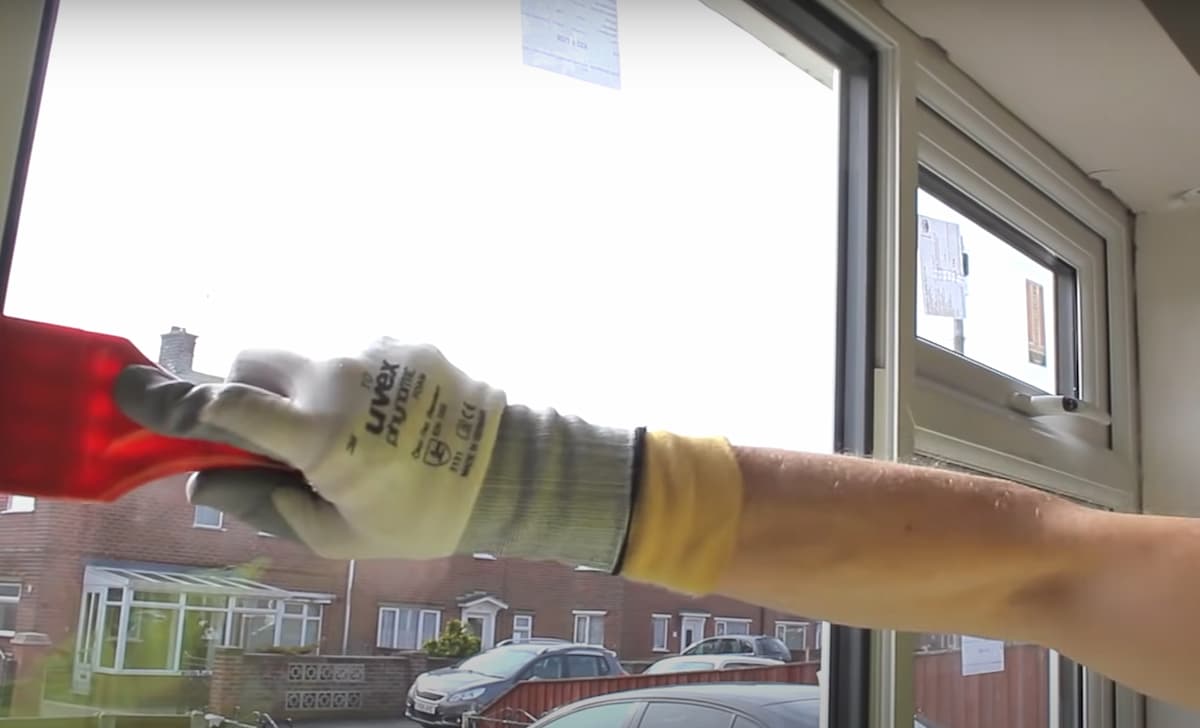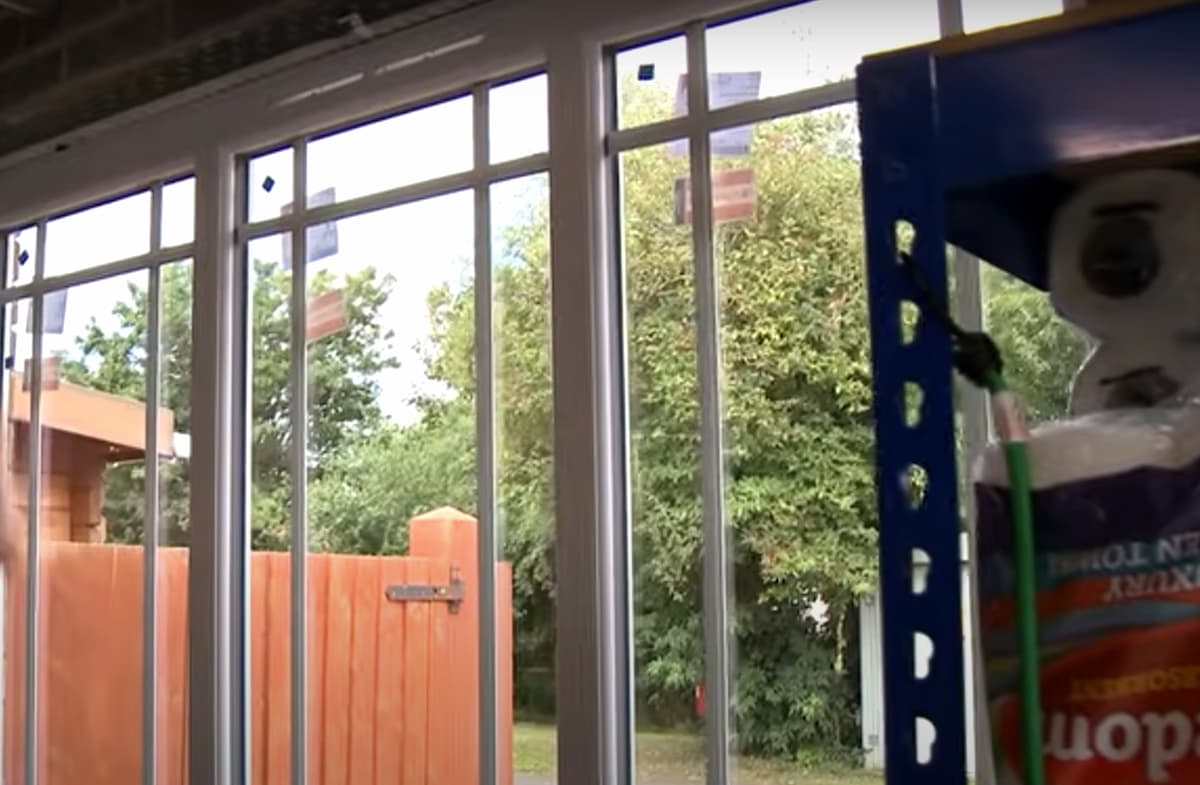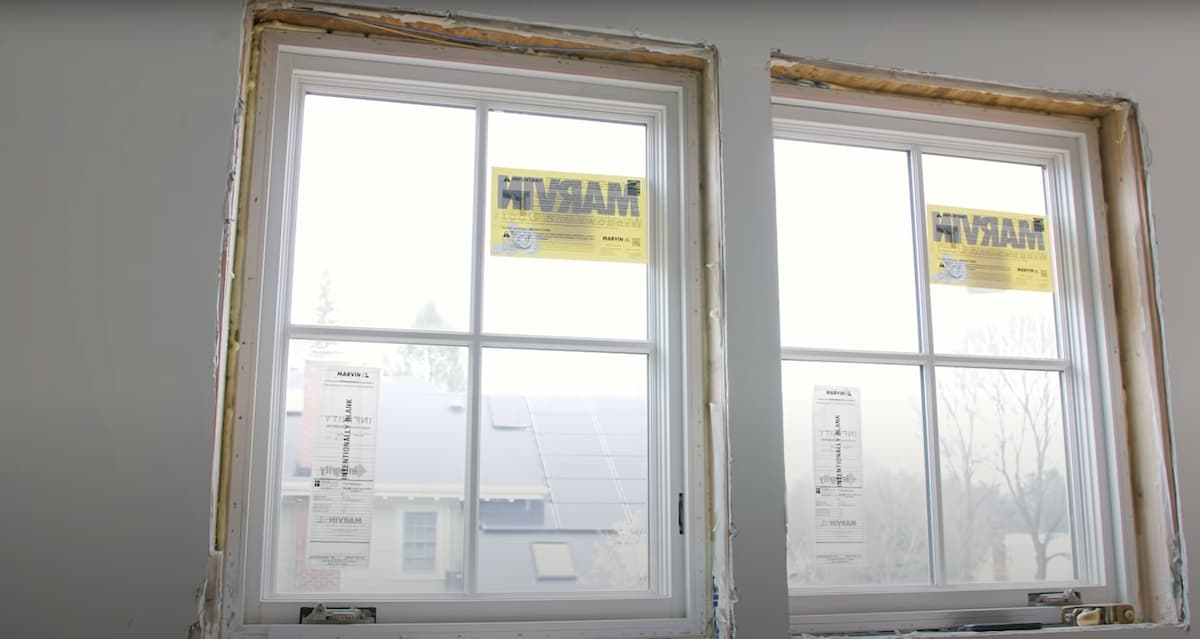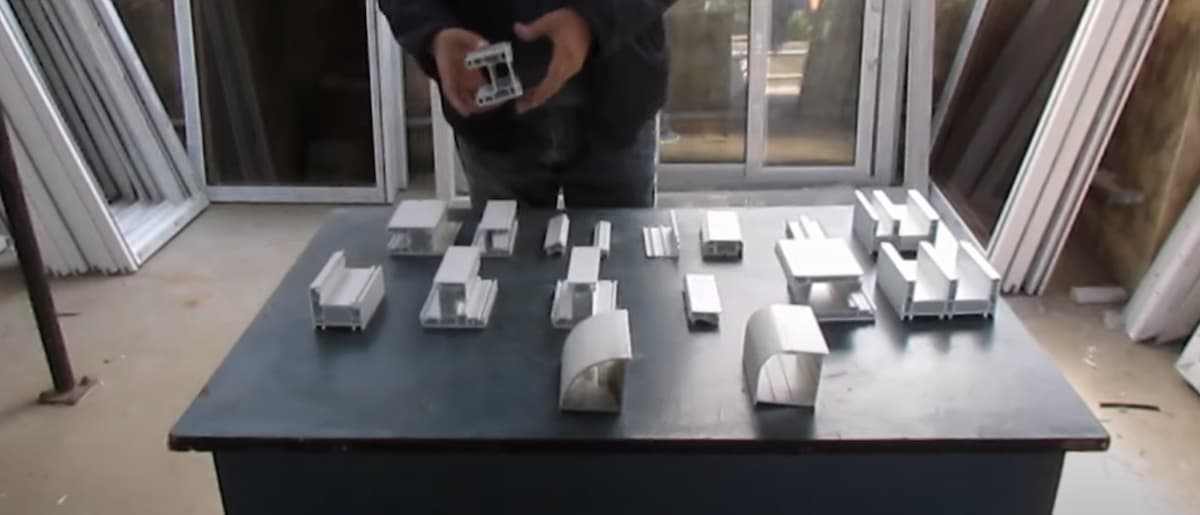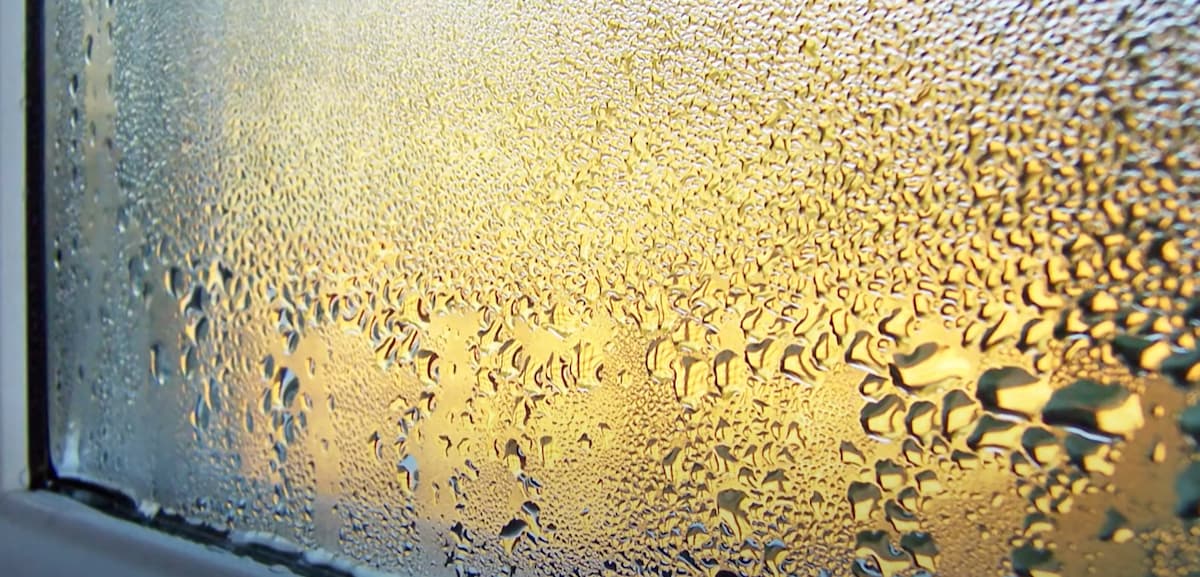
Condensation can be a problem in any home with double glazed windows, but it doesn’t have to be. That said, there are a few conditions that may cause this problem to occur more often and these include a lack of draught-proofing and ventilation as well as problems with the design or installation of your modern replacement windows.
A large proportion of condensation problems are due to inferior workmanship during the installation process. If window draught-proofing isn’t done properly then you’re also likely to get excessive condensation forming on the inside of the newly-fitted double glazed windows.
In addition, many modern replacement windows are designed with a larger surface area in comparison to the older style single-glazed units. This increased area means that there is more opportunity for water vapour to build up and cause problems with condensation.
What is Condensation?
Condensation is the result of water vapour coming into contact with a colder surface. This can happen when warm, moist air comes into contact with a cold windowpane, for example. The water vapour turns into liquid droplets and these may then run down the window, often causing a streaky or foggy appearance. This is a very common problem with double glazed windows and it can be quite frustrating if you don’t know what causes it or how to stop it.
What’s Bad about Condensation?
The main problem with condensation is that it can cause mould and mildew to form. This is a health hazard as the spores from these can cause respiratory problems, particularly in vulnerable people such as young children and the elderly. In addition, dampness caused by condensation can also damage furniture, walls and ceilings.
How to Reduce Double Glazing Condensation?
There are a few things you can do to help reduce the risk of condensation forming on your double glazed windows:
- Make sure your window draught-proofing is done properly, and that all gaps and cracks around the frame are sealed up.
- Install an extractor fan in the bathroom and kitchen to remove any excess moisture from the air.
- Ensure that your replacement windows have been properly designed and manufactured to meet British standards.
- Invest in a Chromatherm radiant barrier to dramatically reduce the amount of heat transfer from inside your home. This may help to keep your window surface temperature low, thus reducing condensation levels on the glass itself.
In addition, you could also consider draught-proofing and insulating all other areas where air can get into the house such as doors and windows which don’t already have double glazing fitted, skirting boards and any gaps around electrical outlets and light switches.
What Causes Double Glazing Condensation?
The fact of the matter is, condensation on a double glazed window can be caused by a variety of factors, and it’s often hard to find the specific solution that may work for your home. That said, if you take the time to properly assess the problem and make the necessary changes, such as installing better quality replacement windows or draught-proofing your home, then you could see a significant improvement in the amount of condensation forming on your windows.
If you’re still experiencing problems with excessive condensation, it might be worth considering investing in a dehumidifier to help remove any excess moisture from the air. This may help to keep your indoor environment healthy and comfortable, and may also help to reduce the risk of damp, mould and mildew.
If your double glazing windows are not opening as wide as they used to, it might be because the seals have deteriorated or failed. You can replace them with new ones by calling a local glazier who provides double glazed window repair services in Australia at affordable prices.
How does Warm Air Affect Glass Panes?
When warm air comes into contact with a window pane, it may transfer any additional heat to the cold glass and condensation may form as a result. This is why double glazing windows are fitted with two panes of glass so that one can compensate for the other and ensure that there is no additional heat transfer from inside your home.
If you’re still experiencing problems with excessive condensation on your double glazed windows, then do consider investing in a dehumidifier or better draught-proofing around the house. The problem might also be down to inferior workmanship during installation, talk to a local glazier who can arrange installation services all across Australia at affordable prices, including double glazing window repair services.
Most double glazed windows come with a 10-year warranty, so if you’re having problems with condensation or moisture ingress, then it might be worth getting in touch with the window manufacturer or installer to see if they can help.
How to Prevent Condensation Damage in Your Home?
Condensation can cause a variety of problems in your home, from excessive moisture and mould growth to window corrosion and related structural damage. That’s why it’s important to take steps to prevent condensation from occurring in the first place, by installing quality replacement windows, draught-proofing your home and keeping the indoor environment as dry as possible.
Replacement windows are a key part of any condensation prevention strategy, as they help to keep the warm air inside your home and the cold air out. Good quality replacement windows may also feature low-E glass, which helps to reflect heat back into your home in the winter and keep it cooler in the summer. Draught-proofing is another important step in preventing condensation, as it helps to keep warm air from escaping your home through cracks and gaps in the walls, floors and roof.
Finally, it’s important to maintain a consistent humidity level in your home by using a dehumidifier or humidifier as needed. A dehumidifier removes moisture from the air, while a humidifier adds moisture to the air. Either can help to keep the humidity in your home at a level that prevents condensation from forming on windows and other surfaces. Keep these steps in mind when preventing condensation damage, and you’ll have a much easier time maintaining comfortable indoor air quality in your home for many years.

Do Double Glazing Windows Stop Condensation?
Double glazing windows are designed to stop condensation from forming by using two panes of glass instead of one. This helps to prevent any additional heat transfer from the warm air inside your home to the cold glass, which can cause condensation to form. Although double glazing windows can help to reduce the amount of condensation that forms, they are not 100% effective and some condensation may still form. In order to minimise the amount of condensation that forms, it’s important to install quality replacement windows, draught-proof your home and maintain a consistent humidity level in your environment.
Condensation on the Inside Facing Glass of Your Windows
Window condensation is a common problem that can have a number of causes, such as too much humidity in the air, poor insulation or window installation, and extreme weather conditions. If you’re experiencing problems with condensation, there are a few things you can do to try to fix the issue, such as installing quality replacement windows, draught-proofing your home and using a dehumidifier or humidifier
If none of these solutions works, then you might want to consider contacting the window manufacturer or installer to see if they can help. Most double glazed windows come with a 10-year warranty, so it might be worth getting in touch if you’re still experiencing problems with condensation after several years.
When Should You Get Your Windows Replaced?
If you’re experiencing problems with window condensation, draughts or poor insulation, then it might be time to consider getting your windows replaced. Double glazed windows can last for many years and usually come with a 10-year warranty, so you could contact the installer or manufacturer if you’re still having issues after several years. You could also consider getting your windows replaced if they’re damaged or very old. Damaged windows can let in moisture and pests, while old windows may not be Energy Star certified and could be costing you more money on your energy bills.
If you’re thinking about getting new windows, it’s important to consult with a professional installer. They can help you choose the right type of window for your home and give you a quote for the installation. It’s also important to make sure that the installer is licensed and insured, so you know that they may do a quality job.
Replacing your windows is a big investment, but it can be worth it in the long run. Not only may you save money on your energy bills, but you’ll also have peace of mind knowing that your home is more energy-efficient and you have energy-efficient windows. If you’re considering getting new windows, contact a professional installer today to learn more about your options.
Tips for Fixing Condensation of Windows
If you have ever seen the condensation of windows in your home, you know that it can be a real nuisance. Not only does the water droplets make the glass look dirty, but it can also lead to the growth of mould and mildew. Here are some tips for fixing the problem:
- Check for leaks
The first step is to check for any leaks around your windows. If there are any leaks, then you may need to fix them in order to stop the condensation from occurring.
- Increase ventilation
One of the main causes of window condensation is a lack of ventilation. Make sure that you keep all your windows open as often as possible in order to allow air to circulate.
- Install window insulation
If you are unable to increase the ventilation in your home, then you may want to consider installing window insulation. This may help to keep the air from escaping and may prevent condensation from occurring.
- Use a dehumidifier
If you have a lot of condensation on your windows, it may be because the humidity levels in your home are too high. You can reduce the humidity levels by using a dehumidifier.
- Treat any mould or mildew
If you have already noticed mould or mildew growing on your windows, you may need to treat it with a mould inhibitor or fungicide. This may stop the growth of the mould and mildew and may also help to prevent it from returning.
- Use distilled water for cleaning
It is important that you use distilled water when cleaning your windows in order to prevent any problems with window condensation. You could never use tap water when cleaning, as it contains minerals that can leave residue on the glass.
- Use a squeegee
If you are using distilled water when cleaning your windows, then it is important that you dry them off right away by using a squeegee. If you do not wipe up the moisture immediately, then this may cause additional problems with the condensation forming again quickly.
- Use vinegar solution for stubborn stains
If there are any particularly difficult spots on your windows, then you can try using a vinegar solution to clean them. Just mix equal parts of vinegar and water together and use a cloth or sponge to apply the solution to the stained area.
- Install window shades or blinds
If you are having a lot of problems with window condensation, then you may want to consider installing window shades or blinds. This may help to keep the warm air from entering your home in the summer and may prevent condensation from occurring.
- Replace old windows
If you have older windows in your home, they may be more prone to condensation. If this is the case, you may want to consider replacing them with newer, energy-efficient windows that may help to reduce the amount of condensation.
Window condensation can be a real nuisance, but with these tips, you can fix the problem and keep your windows looking clean and clear.


